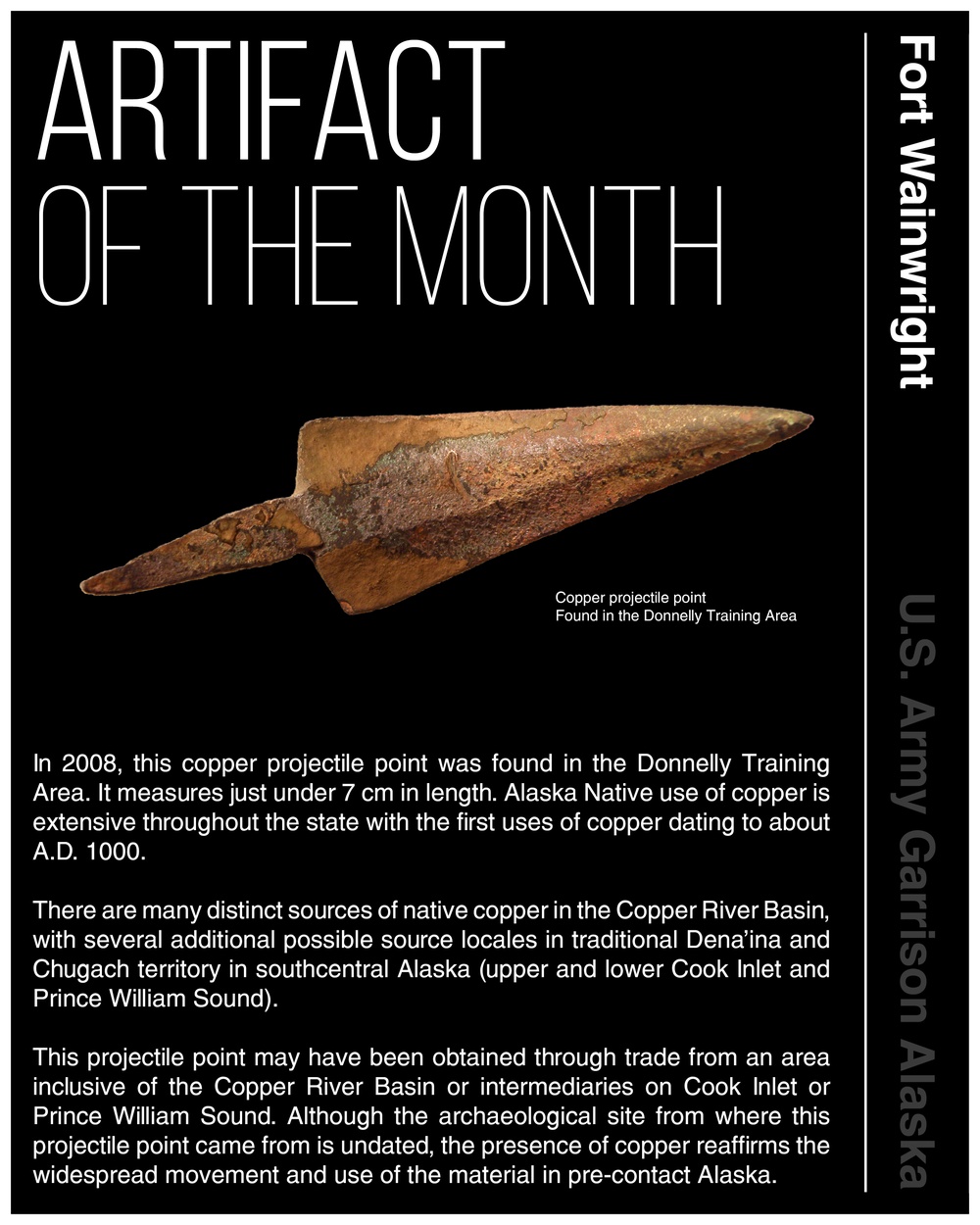
Army Regulation 200-1 (AR 200-1), Chapter 6, instructs installations to make informed decisions regarding cultural resources under their control in compliance with public laws, in support of the military mission, and consistent with sound principles of cultural resources management.
Interior Alaska has been continuously inhabited for at least the last 14,000 years, and evidence of this continuum of human activity has been preserved within and around USAG Alaska’s training lands. Interior Alaska’s ice-free status during the last glacial period provided a corridor connecting the Bering Land Bridge and eastern Asia to North America. This allowed small bands of nomadic peoples to colonize Alaska, and ultimately the rest of the continent. It began a period of habitation in Interior Alaska that has persisted through the entire Holocene, the arrival of European traders in the late 1810s, the Klondike Gold Rush of the late 19th and early 20th centuries, and the military development of the Interior during the middle of the 20th century. Fort Wainwright’s cantonment and associated training lands comprise a vast and still relatively un-surveyed region with areas of high potential for yielding evidence of this activity.
Every summer archaeologists with USAG Alaska conduct archaeological fieldwork on the 1.6 million acres of training lands to help further military missions. Artifacts recovered from fieldwork provide clues to the past. The artifact of the month series will highlight some of these artifacts and share what information can be learned from them.
| Date Taken: | 03.31.2024 |
| Date Posted: | 04.12.2024 15:47 |
| Photo ID: | 8337606 |
| VIRIN: | 240331-A-RX777-1001 |
| Resolution: | 4500x5625 |
| Size: | 2.29 MB |
| Location: | FAIRBANKS, ALASKA, US |
| Web Views: | 9 |
| Downloads: | 1 |

This work, Artifact of the Month: April [Image 5 of 5], by Cole Keller, identified by DVIDS, must comply with the restrictions shown on https://www.dvidshub.net/about/copyright.